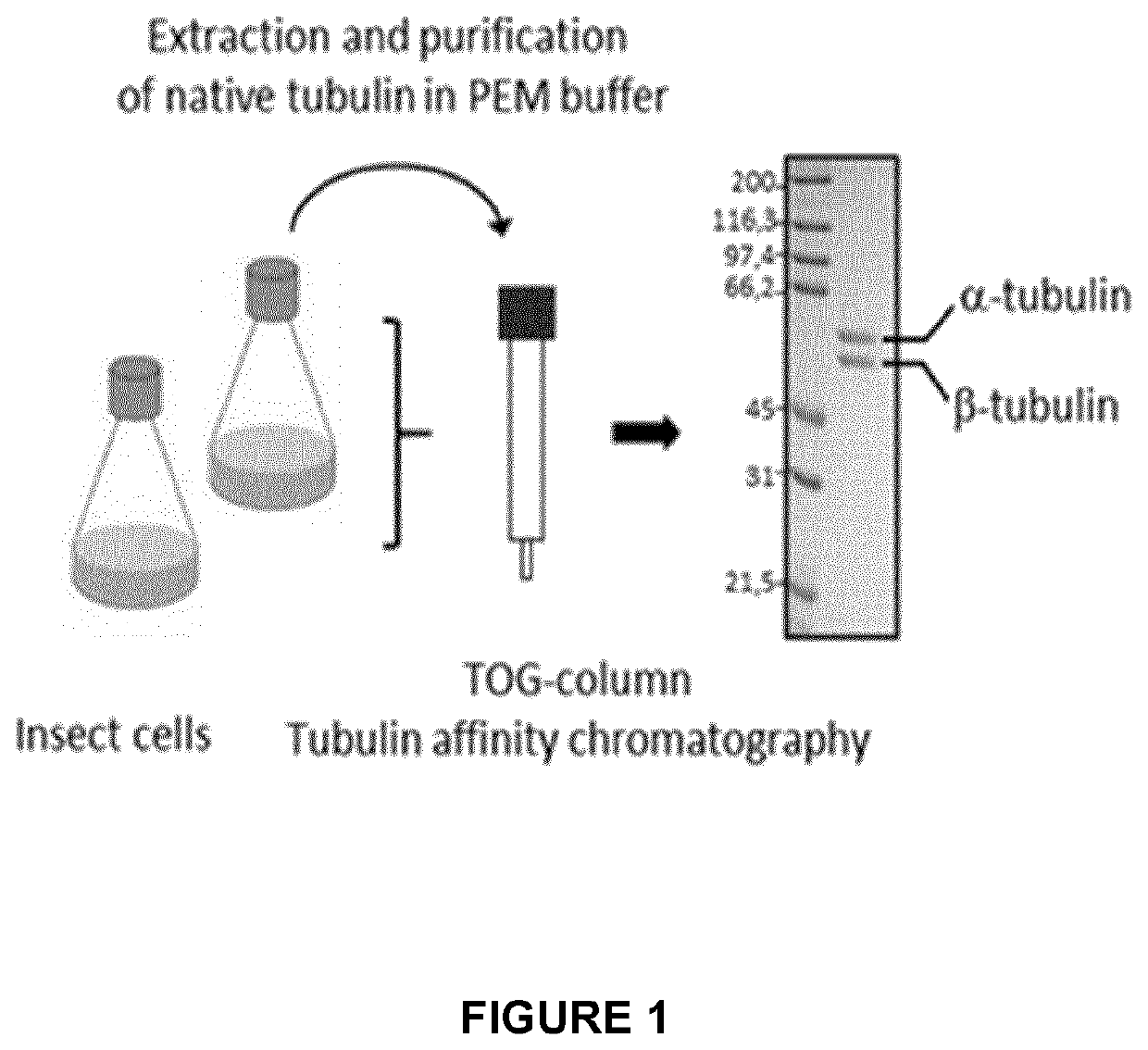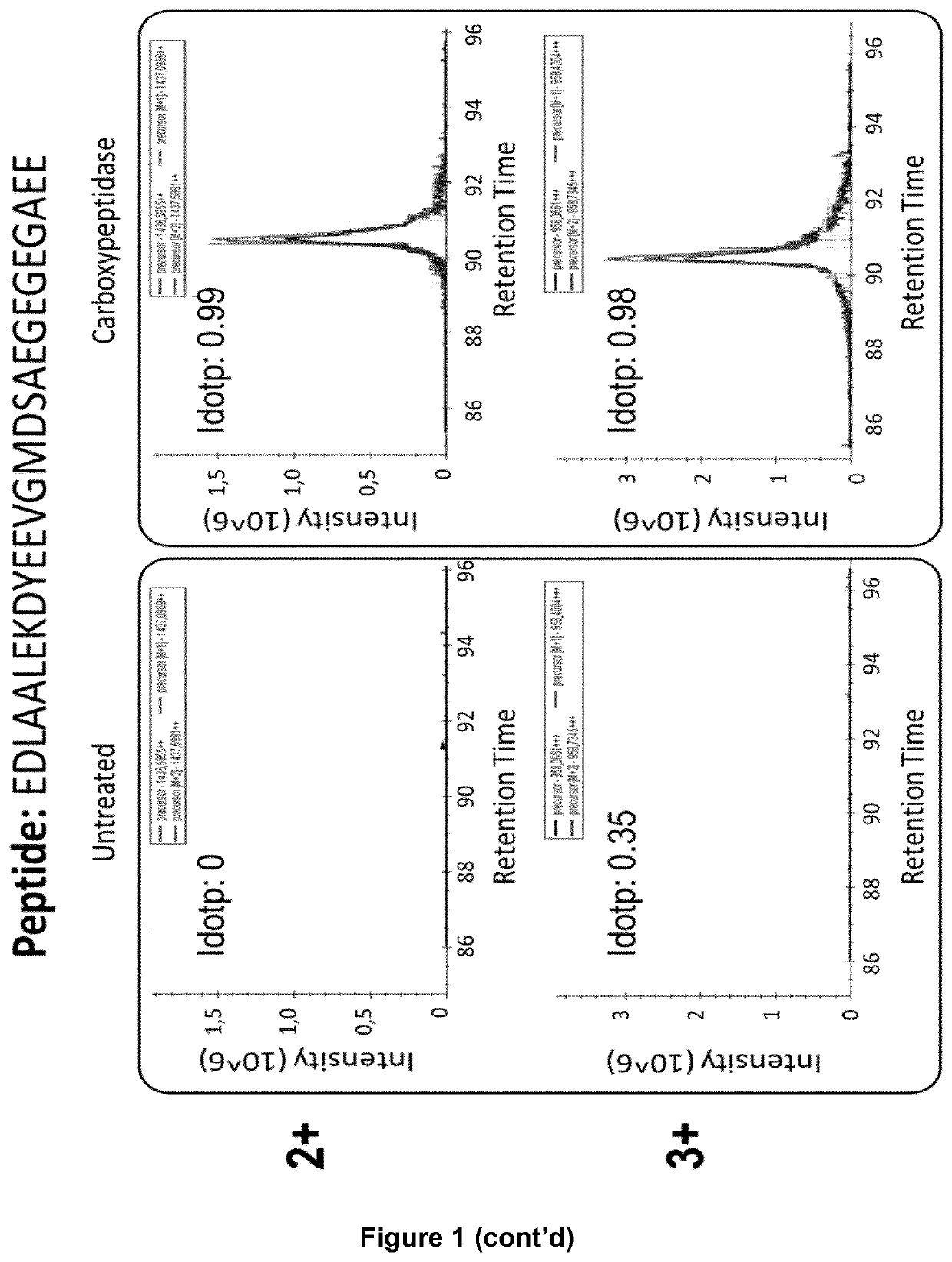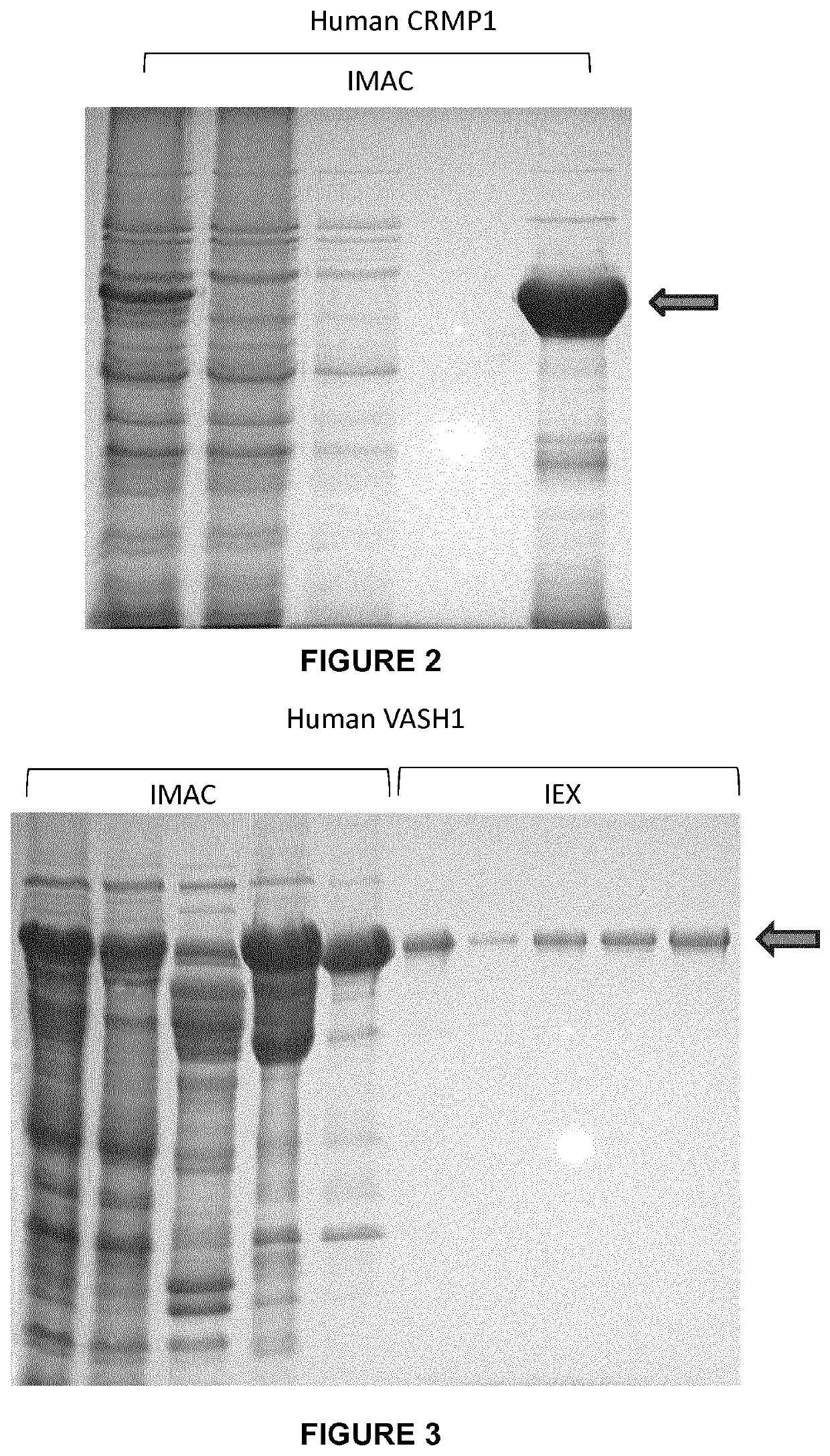In vitro Screening Assay of TCPase Modulators
a technology of tcpase modulator and in vitro screening assay, which is applied in the field of in vitro screening immunoassay, can solve the problems high toxicity, and rapid mt turnover, and achieves the effects of preventing the development and preventing the formation of drug-resistant cancer cells
- Summary
- Abstract
- Description
- Claims
- Application Information
AI Technical Summary
Benefits of technology
Problems solved by technology
Method used
Image
Examples
example 1
Immunoassay (Immunoblot and ELISA) for Identification of Detyrosinase (TCPase) Modulators Compounds
[0294]The proof of principle of an immunoassay such as ELISA assay has been obtained by using VASH2 recombinant protein for enzymatic description (FIG. 12). Advantageously the assay has been used in a dose-response analysis using a previously described Epoxy-Y inhibitor (Science 2017, Aillaud et al.). As expected increasing amounts of Epoxy-Y inhibitor resulted in a dose dependent inhibition of VASH2 detyrosinase activity. Oppositely SVBP induces tubulin carboxypeptidase activity of VASH2 (FIG. 9). Next, Tubulin purified from Sf9 insect cells (fully tyrosinated; FIG. 1) was polymerized in presence of Taxol at 37° C. for 30 min, washed and stored in −80° C. until further use. Recombinant VASH2 protein was pre-incubated 5 min at room temperature in presence or absence of Epoxy-Y. The previously prepared microtubules (MTs) (substrate of TCPase, ie VASH2 protein) were added to the reaction...
example 2
Colorimetric Assay (Spectrophotometric Assay) for Identification of Detyrosinase (TCPase) Modulators Compounds
[0302]The assay relies on the well-document tyrosinase activity on free tyrosine. Free tyrosine can be converted by tyrosinase into a colorimetric detectable compound. This reaction has been described for almost a century (Lichtman, J B C 1929) and applied to measure free tyrosine in various samples.
[0303]Tyrosinase catalyzes tyrosine to DOPO and DOPA to DOPAquinone subsequently. During DOPAquinone formation, protons (H+) are produced and these protons could be monitored by substrate (ex: thymol blue) color change (Park et al., 2003).
[0304]Current method relies on the use of VASH2 and appropriate substrate of TCPase as disclosed in the above Material & Methods to release free tyrosine in the reaction mixture that can in a second step be used for tyrosinase-dependent analysis and spectrophotometric quantification.
[0305]A reaction mixture was prepared by pipetting a phosphate ...
example 3
Assay for Identification of Detyrosinase (TCPase) Modulators Compounds
[0313]In this technique, 2 μl of the reaction mixture containing the substrate (8 amino acid peptide consisting of GEEEGEEY) and the enzyme (Recombinant human VASH2) in absence or in presence of the compound were doted on nitrocellulose and assessed for detyrosination of the peptide using a specific antibody detecting detyrosination.
[0314]The filter is allowed to dry and the membrane is incubated in blocking buffer to prevent non-specific binding. Similarly to ELISA, HRP-coupled antibody directed against the detyrosinated Telokin engineered substrate (as disclosed above) is incubated over the membrane, excess is washed-off and the membrane is developed using e.g. chromogenic HRP substrate. Intensities of the signals on autoradiograms were quantified by densitometric scanning. Alternatively, we designed a method using a slot blot approach.
[0315]The steps are identical as for the dot blot approach, this is the sampl...
PUM
 Login to View More
Login to View More Abstract
Description
Claims
Application Information
 Login to View More
Login to View More - R&D
- Intellectual Property
- Life Sciences
- Materials
- Tech Scout
- Unparalleled Data Quality
- Higher Quality Content
- 60% Fewer Hallucinations
Browse by: Latest US Patents, China's latest patents, Technical Efficacy Thesaurus, Application Domain, Technology Topic, Popular Technical Reports.
© 2025 PatSnap. All rights reserved.Legal|Privacy policy|Modern Slavery Act Transparency Statement|Sitemap|About US| Contact US: help@patsnap.com



